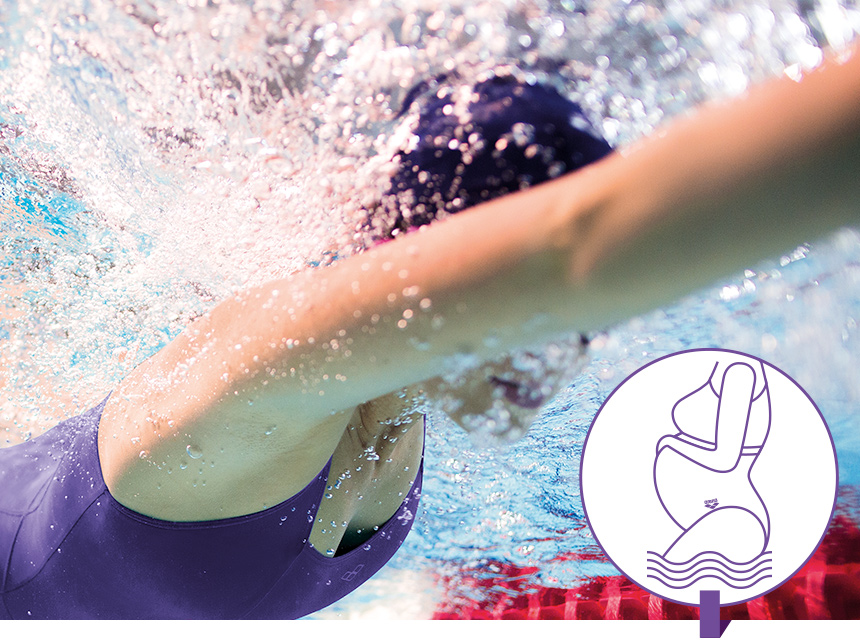Swimming is widely acknowledged to be one of the best sports for pregnant women, as it offers aerobic benefits as well as engaging all the major muscle groups, and its low-impact nature protects your joints and ligaments. But are certain strokes better than others?
There is really no one-size-fits-all answer. If you’re fit and have good technique, and you’ve had no complications with your pregnancy, you will likely be able to maintain your pre-pregnancy swim routine, incorporating all the strokes into your workout. As your pregnancy progresses, you may find that you need to decrease the length and intensity of your workouts, and you might also need to eliminate certain movements if they become uncomfortable. Your body will usually let you know if you need to take things easier.
Trainers, doctors and expectant mums all have their own recommendations (some conflicting), but following are a few things to keep in mind about the various strokes.
Butterfly. Some experts recommend that pregnant women avoid the butterfly stroke because of the stress it places on the spine. It is generally considered the most difficult stroke, so it’s perhaps not ideal if you’re already tiring more easily than usual. Unless you’re a butterfly specialist, you might find that you’re able to sustain a gentler, more consistent effort level with a different stroke.
Freestyle. For most swimmers, the front crawl, or freestyle, is the fastest and most effective stroke. It’s generally a good choice for pregnant women, as long as you do not twist your torso too much. If your body is aligned correctly, and your shoulders, torso and hips all rotate as one, the crawl shouldn’t pose any particular problems.
Breaststroke. Breaststroke is often cited as the best stroke for expectant mums because it involves less effort, and, by lengthening the chest muscles and shortening the back muscles, it counteracts the tendency toward misalignment of the shoulders, spine and pelvis that is common during pregnancy. If you suffer from symphysis pubis dysfunction, though, you’ll want to avoid the breaststroke, as the kicking motion will likely aggravate the discomfort.
Backstroke. You’ve probably been counselled against lying on your back, especially in the third trimester, because the baby’s weight can compress the inferior vena cava, a major vein that carries blood from the lower body to the heart. In the water, though, the effects of gravity are reduced, so you can swim on your back without the same risk.
You can also experiment with swim training aids if you want to work on just your arms or just your legs. If you’re using a kickboard, it’s best to keep your head down (you could even try swimming with a snorkel). Holding your head up will cause your hips to drop and further exaggerate the curve in the spine.
The one thing you should not do is dive. Flip turns are fine, but you’ll probably find them awkward to execute later in your pregnancy.
However you choose to spend your time in the pool, be sure to listen to your body. If you start to feel faint or dizzy, stop swimming immediately. Take a day off if you feel overly fatigued; swimming should energize you, not leave you feeling exhausted.
If you’re a mum or mum-to-be, how has your pregnancy affected the strokes you use? How have you adapted your workout?
—————
